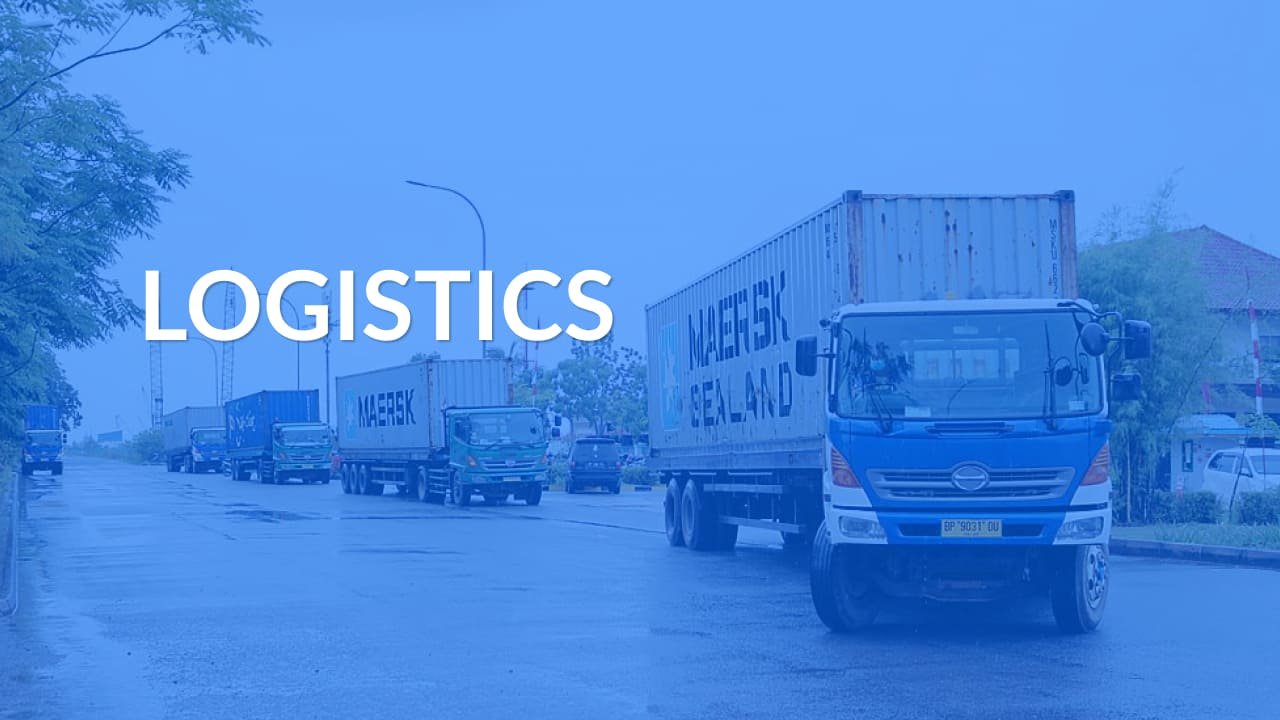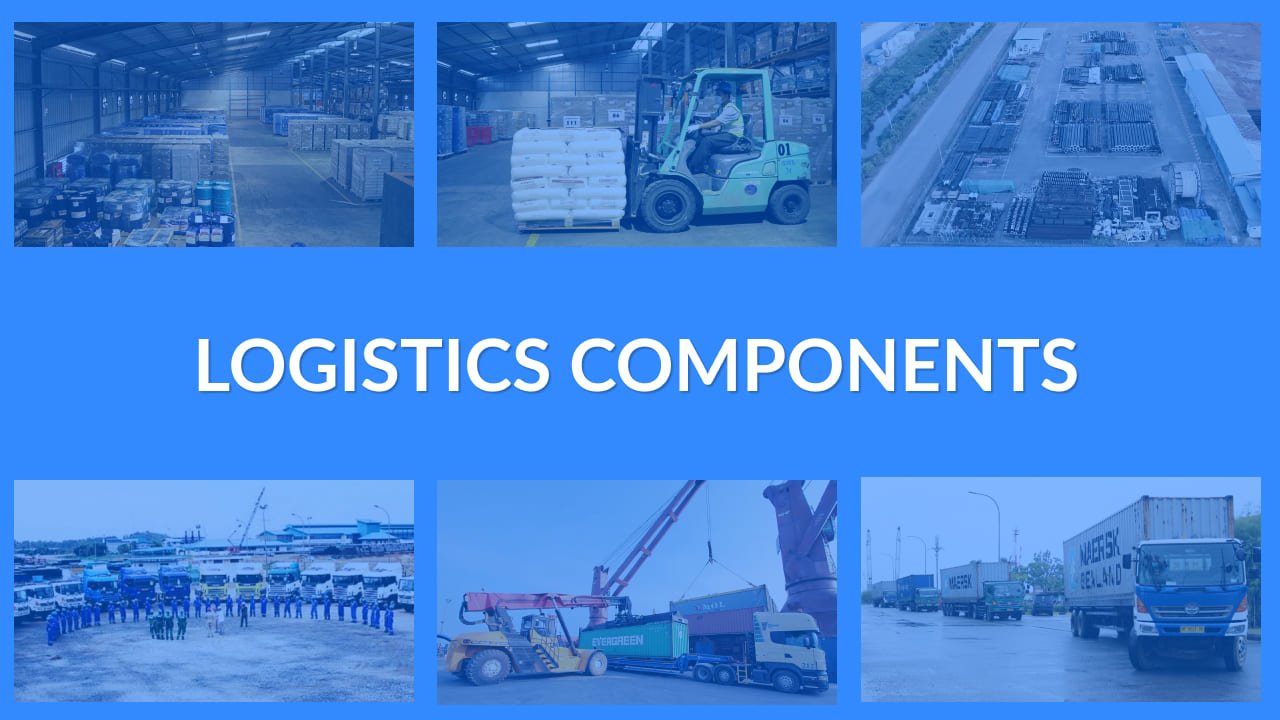In general, logistics is the process of moving products from producers to consumers, which includes getting products from producers, managing storage in warehouses, and delivering products to consumers.
An understanding of logistics helps a company to maximize profits and provide the best experience for customers. In this article, we will discuss what a logistics process is, why it is important, what its components are, and how it differs from supply chain management.

What is Logistics?
Logistics refers to the process of planning, executing, and controlling the movement of products, services, or information in the supply chain from the point of origin to the consumer. Various logistics companies handle some or all of these supply chain functions depending on the logistics needs of their clients.
The term “logistics” was first used in the military to refer to the movement or transportation of military equipment and equipment. Today, the term is widely used in the business sector, especially by manufacturing companies, to refer to how goods or raw materials are handled and moved along the supply chain.
How About Logistics Management?
Logistics management focuses on the efficient management of a company’s product or service production process from the point of origin to the consumer. Create plans to meet customer needs and monitor available resources.
If done right, logistics management can help companies lower costs and improve customer service.
The main objective of logistics management is to provide the right amount of resources, put them at the right time into the supply chain and then ensure that the products are delivered to the right people in good condition.
Why is Logistics So Important?
Implementing seamless logistics is an important element to keep pace with customer demands and get ahead of competitors. Here are reasons why logistics is important:
1. Logistics Affect Profit.
If you are a gardener, for example, oranges that are being shipped to the market, grocery store, or even a food processing factory, you need to keep your oranges free of insects and pesticides and make sure they grow into healthy fruit.
After the oranges are picked, put in crates, stored, and finally shipped to their final destination. This process should be done within a few days to keep the oranges fresh, this is your logistics supply chain.
If any part of your supply chain goes haywire or breaks, it can affect your entire citrus shipment. For example, if the truck delivering your oranges breaks down, then all of your oranges are at risk of being damaged and may not arrive at their destination in good condition.
Everything in logistics affects your bottom line, including shipping costs, fuel costs, spoilage, storage, and other things involved in getting products to your customers. If you can reduce the risk of product spoilage or reduce logistics costs, you can increase your profit margins.
2. Logistics Affects Customer Experience.
Great customer experience not only gives satisfaction to customers but can also increase company revenue. Satisfied customers will tell their friends, family, colleagues, and relatives who will then consider buying from you.
The customer doesn’t care how you make the product or what problems you run into. They only care about how they can receive the product quickly and in good condition. When your logistics fail to prepare orders quickly you run the risk of keeping customers waiting. This can lead them to look for other sellers.
You can help improve your customer experience by using integrated logistics services, such as the logistics services provided by SCN Logistics Group.
Components in Logistics

Logistics may include some or all of the following business functions:
1. Inbound Transportation.
Inbound transportation is the movement of goods and materials from suppliers to your company. It involves activities such as shipping, storage, and distribution of spare parts or raw materials used in production. It can also include tracking inventory, sourcing materials, and optimizing the movement of goods from suppliers to your warehouse, store, or factory.
2. Outbound Transportation.
Outbound transportation is the flow of finished products from the company to customers or end-users. These activities are mostly related to customer service and distribution channels. For example, if the sales department in a company receives an order from a customer, they will check the inventory to make sure the product is in stock and then send the order to the warehouse for packaging and shipping to the customer.
3. Warehousing / Warehousing.
Warehousing refers to the storage of goods and inventory within a particular area or building. It is necessary for most companies that manufacture, export, import, or transport goods. Warehousing services will store products in an organized way, so your company can track where your goods are.
4. Fleet Management.
Fleet management refers to the management of motorized vehicles, aviation engines, ships, and train cars. This can include functions such as vehicle financing and leasing, licensing, vehicle maintenance, and accident management.
Efficient flight management enables companies that rely on transportation for their business to reduce or eliminate the risks that come with investing in vehicles. This increases efficiency and productivity, reduces overall transportation costs, and provides 100% compliance with government regulations.
5. Order fulfillment.
Order fulfillment is the process of storing goods, packaging orders, and shipping products to customers. In a broad sense, order fulfillment involves activities that occur after a customer places an order until the time they receive the order. Companies can handle order fulfillment internally or use third-party logistics companies.
6. Inventory Management.
Inventory refers to goods or materials that a company intends to sell to customers for a profit. Inventory management is an important component of the supply chain.
The main goal of inventory management is to get the right goods or raw materials at the right place at the right time. Of course, this requires inventory visibility, such as determining when to order, how much to order, and where to store it.
7. Material Handling.
Material handling is the movement of goods or raw materials in a warehouse or storage area. This involves the use of manual, semi-automatic, and automatic systems and equipment. It is important to consider the storage, and control of goods during their manufacturing, warehousing, and distribution phases.
8. Demand Planning.
Demand planning is the process of forecasting demand to ensure the fast delivery of products. Effective demand planning can improve the accuracy of your company’s revenue forecasts, increase profitability for specific products or channels, and align inventory based on demand.
Difference Between Logistics and Supply Chain Management
When we talk about logistics and supply chain management, the two things are indeed “similar but not the same”.
Logistics refers to the movement and storage of products inside and outside the company. While supply chain management is a series of interrelated activities related to the manufacture and movement of products from raw materials, finished products to the hands of customers.
Please read an article about Supply Chain Management and its Benefits.
Logistics Company in Indonesia
SCN Logistics Group is a logistics service provider company, that has 35 years of experience in providing logistics services to well-known companies.
Having complete and certified facilities and equipment, SCN Logistics Group can provide more efficient logistics services.
Visit SCN Logistics Group’s Facebook, Instagram, Linkedin, and Youtube pages to get information about logistics and logistics services.
Add a Comment
You must be logged in to post a comment